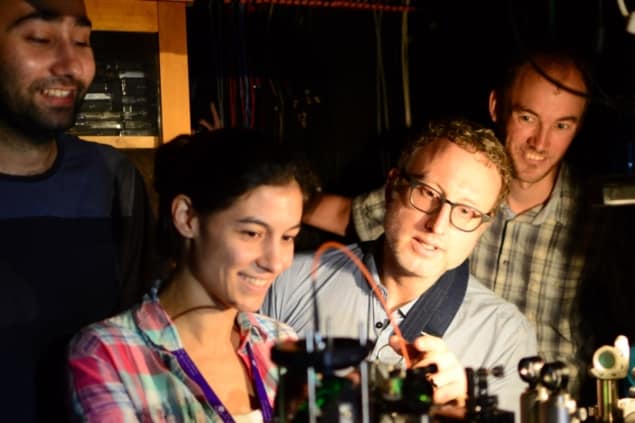
Quantum entanglement has been used to overcome a key limitation on the speed, sensitivity, and resolution of a bioimaging technique called stimulated Raman scattering (SRS) gain microscopy.
The breakthrough was made by Warwick Bowen and colleagues at the University of Queensland in Australia and Germany’s University of Rostock, who showed how correlations between the detection times of photons from a bright laser could greatly improve the signal-to-noise ratio of SRS — allowing detection of molecular samples with 14% lower concentrations than were previously possible.
SRS is widely used for imaging biological tissues on molecular scales. It works by illuminating samples with two lasers with different frequencies. First light from a “pump” laser undergoes Raman scattering from a molecule of interest, causing the molecule to emit a photon at a different frequency than the pump light. This “Stokes” photon is characteristic of the molecule’s unique vibrational mode and collecting these photons allows the molecule of interest to be imaged in a sample.
Clever trick
However, this Stokes signal is very weak, so a clever trick is used to enhance it. A second laser at the Stokes frequency is used to illuminate the sample, which enhances the emission of Stokes photons and makes the molecular signal easier to measure.
However, for this technique to work, noise in the Stokes laser must be reduced to a minimum. Since photons are discrete energy packets, there is an inherent randomness in the times at which they each arrive at the detector. This creates unavoidable “shot noise” in the detected signal, that can all but drown out the desired signal — putting fundamental limits on the speed, sensitivity, and resolution of the technique. This problem could be overcome by raising the intensities of the pump and Stokes lasers, however this would risk damaging delicate biological samples.
Squeezed states
Now, Bowen’s team have lowered the shot noise of the system by preparing the Stokes laser’s photons in “squeezed-amplitude” quantum states. The photons are entangled quantum mechanically, which means that their quantum states are no longer fully independent of each other. This results in a significant reduction in the randomness of photon detection times.

Biochemical quantitative phase imaging goes photothermal
Although the intensity of the molecular signal remained unchanged, this new approach made it far easier for Bowen’s team to distinguish it from noise. Overall, they achieved an improvement in signal-to-noise ratio as high as 35%, allowing them to detect molecular samples with 14% lower concentrations than were previously possible – without increased risk of laser damage.
Although this improvement was relatively modest, it allowed the researchers to observe biological structures that could not otherwise be resolved. The success of their technique also illustrates potential for using quantum-correlated light in other optical imaging applications – which could potentially lead significant improvements in speeds and sensitivities.
The new technique is described in Nature.



